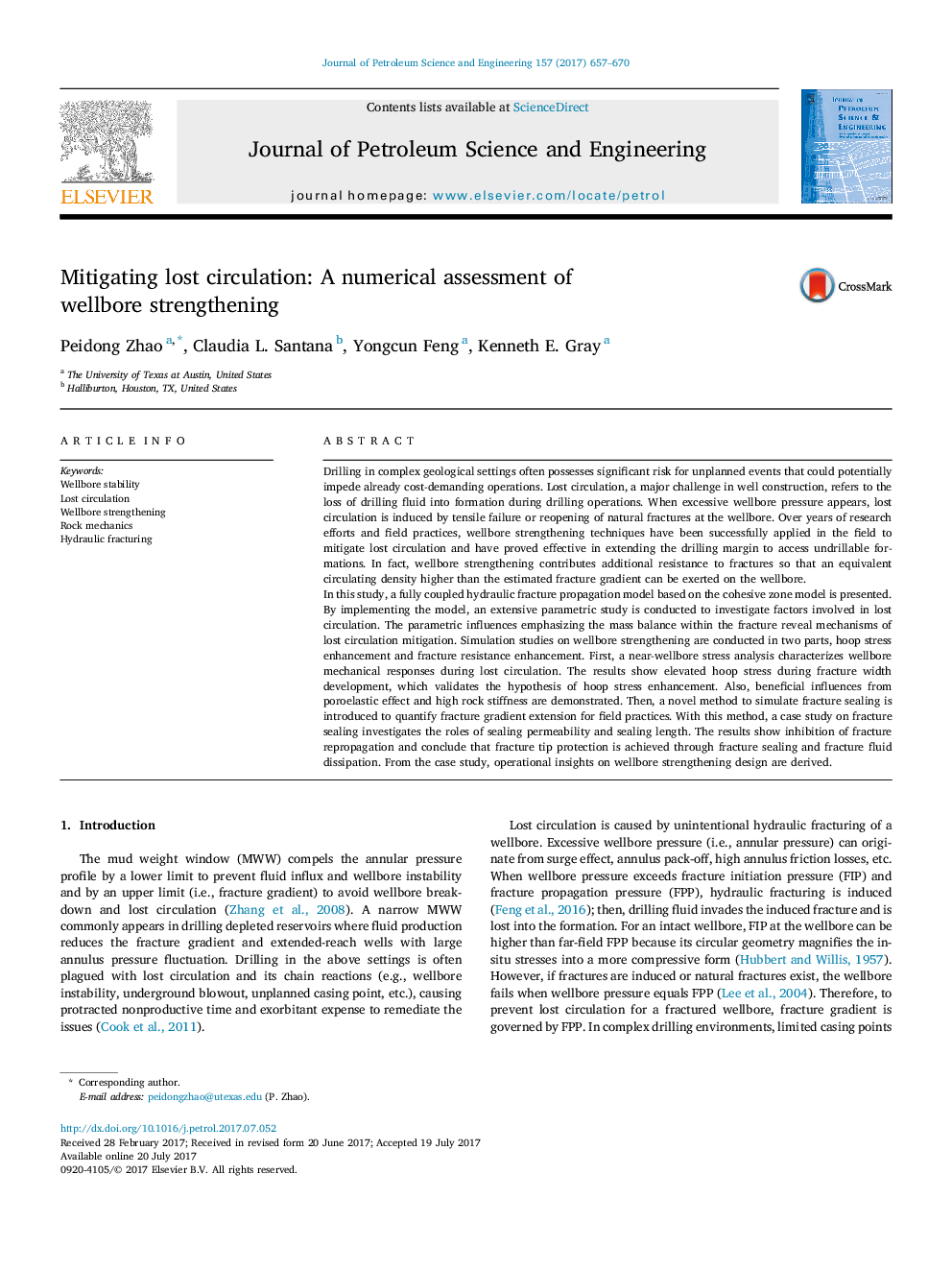| Article ID | Journal | Published Year | Pages | File Type |
|---|---|---|---|---|
| 5483981 | Journal of Petroleum Science and Engineering | 2017 | 14 Pages |
Abstract
In this study, a fully coupled hydraulic fracture propagation model based on the cohesive zone model is presented. By implementing the model, an extensive parametric study is conducted to investigate factors involved in lost circulation. The parametric influences emphasizing the mass balance within the fracture reveal mechanisms of lost circulation mitigation. Simulation studies on wellbore strengthening are conducted in two parts, hoop stress enhancement and fracture resistance enhancement. First, a near-wellbore stress analysis characterizes wellbore mechanical responses during lost circulation. The results show elevated hoop stress during fracture width development, which validates the hypothesis of hoop stress enhancement. Also, beneficial influences from poroelastic effect and high rock stiffness are demonstrated. Then, a novel method to simulate fracture sealing is introduced to quantify fracture gradient extension for field practices. With this method, a case study on fracture sealing investigates the roles of sealing permeability and sealing length. The results show inhibition of fracture repropagation and conclude that fracture tip protection is achieved through fracture sealing and fracture fluid dissipation. From the case study, operational insights on wellbore strengthening design are derived.
Related Topics
Physical Sciences and Engineering
Earth and Planetary Sciences
Economic Geology
Authors
Peidong Zhao, Claudia L. Santana, Yongcun Feng, Kenneth E. Gray,
